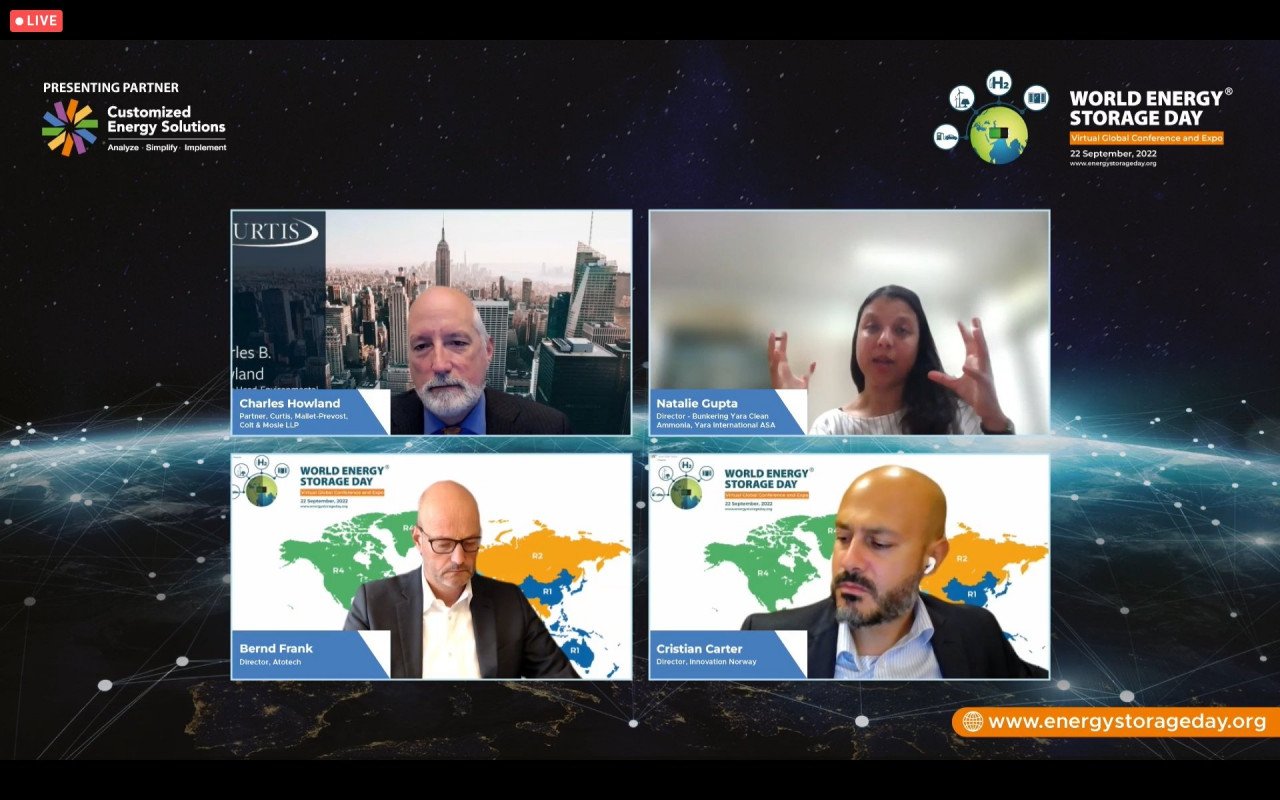For green hydrogen to become cost-competitive, key challenges with regard to softer demand and long-haul transportation need to be worked out, by identifying effective manufacturing, energy carriers and alternative use-cases for the clean fuel in each markets.
As part of the World Energy Storage Day 2022 annual conference organized by IESA, a session on the demand and supply aspects of green hydrogen drew much attention. Speakers of the session dealt with the critical questions on how green hydrogen would be made, transported, and consumed (and essentially – in what means and forms), while locating the global H2 demand-supply scenario in the backdrop of current international developments affecting the industry.
Charles Howland, Partner, Curtis, Mallet-Prevost, Colt & Mosle LLP, delineated a plethora of current issues and challenges faced by the demand-supply chains of the green hydrogen in global markets. "The industry needs to distinguish between 'technically possible' and 'commercially feasible' projects, while transformative approach to cost-effective transportation of H2 is critical for long-term stability", he said.
"While EU, US, and other countries are ramping up hydrogen supply, the demand is softer and doesn't match the supply. Realistic predictions on H2 production in foreseeable future given insufficient pace of renewable energy growth and higher priority to electrification and rising power demand ought to be the important considerations", he added.
Some of the other key observations made and aspects touched by Howland are as follows:
- To make H2 cost-competitive with other sources, the industry will require government subsidies, at least in short term, along with drop in costs of electricity and electrolyzers.
- Countries with higher abilities to generate cheap renewable electricity will be best placed to produce competitive green H2.
- Current geo-political implications of large H2 imports, energy security concerns especially in Europe, and addressing North-South divide are critical.
- Need to examine economic feasibility and energy loss of long-haul H2 transportation by means other than pipeline.
- Balancing use of renewable energy and green hydrogen for local consumption and exports.
Ammonia as H2 carrier
On the question of effective use-case and carrier options for hydrogen, Natalie Gupta, Director - Bunkering Yara Clean Ammonia, Yara International ASA, opined that the existing ammonia infrastructure is the most efficient route to a hydrogen enabled market.
"Clean ammonia has immense potential worth $ 220 billion in the emerging hydrogen-based global economy by 2050, finding effective application in power generation, agricultural inputs, industrial use, and as shipping fuel and hydrogen carrier", she said.
She added that ammonia is by far the most competitive clean fuel for deep-sea shipping, expected to grow into a $ 87 billion market. "As hydrogen carrier, ammonia's market is valued at $ 17 billion by 2050".
A slew of advantages of ammonia as a H2 carrier was highlighted in the session.
- Greater mass of H2 in a litre of liquid ammonia than in a litra of liquid H2.
- Ammonia's boiling point is much higher than H2, hence conversion and preservation in liquid form required less energy.
- Ammonia's lower thermodynamic loses during storage and transportation.
- A majority of NH3 synthesis can be carbon-free using renewable electricity.
- Nitrogen production and ammonia cycle are potentially electrifiable.
- If produced in a carbon-free way, then stored and delivered for ultimate decomposition to extract H2, ammonia represents zero-CO2 hydrogen carrier.
Hydrogen in Europe
The speaker at the WESD 2022 session also spoke on the European Commission latest plan 'REPowerEU' that is setting a target of 10 million tonnes of domestic renewable production and 10 million tonnes of imports by 2030, to replace natural gas, coal and oil to decarbonize the European industries.
Natalie Gupta noted that Europe prioritizing green H2, but blue hydrogen is however seen as a viable transition fuel by producers. "Yara Clean Ammonia sees blue ammonia as a transition fuel, as it affirms robust pipeline with solid project economics and profitability without the need for further subsidies. Green Hydrogen needs early mover strategy where government support will be required. Lower costs in future may increase its competitiveness", she said.
Charles Howland said, "REPowerEU targets can act as key drivers for increased demand for green H2 in the region, but there are problems with the lack of adequate infrastructure to support the aspired numbers".
In his initial remarks as a moderator of the session, Cristian Carter, Director, Innovation Norway spoke on the readiness of Norway to support new H2 and ammonia projects, with continued focus on R&D and commercialization of new technologies and pilot projects. "Norway is known for its interesting energy mix, and hydrogen ecosystem is an integral part of our environmental goals".
He reiterated Norway government's latest commitment to establish 5 hydrogen hubs in the maritime transport by 2025, with a slew of critical measures to stimulate demand in the H2 ecosystem.
Read More

